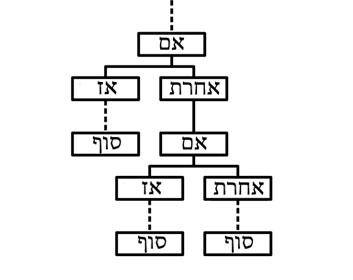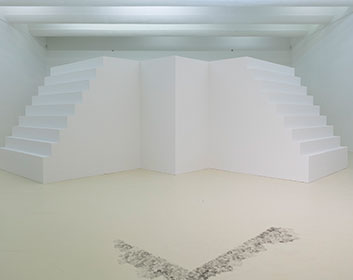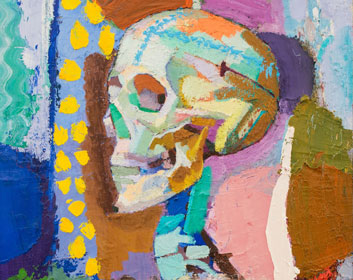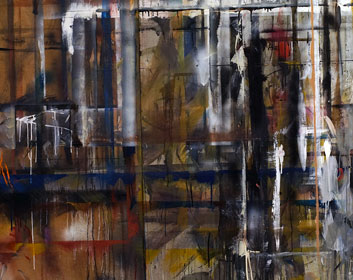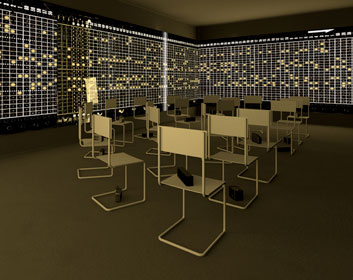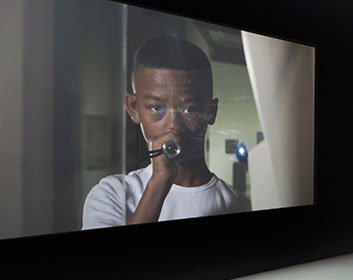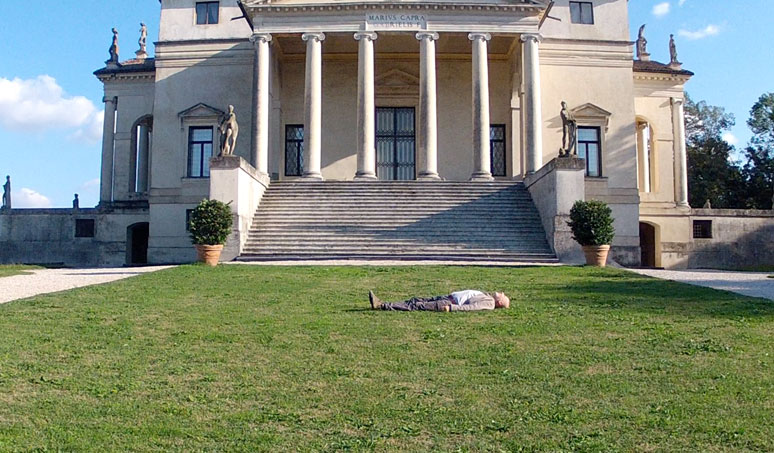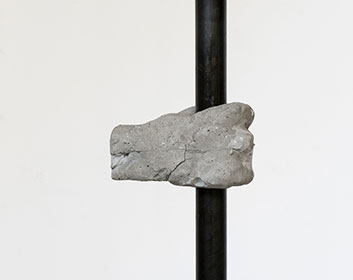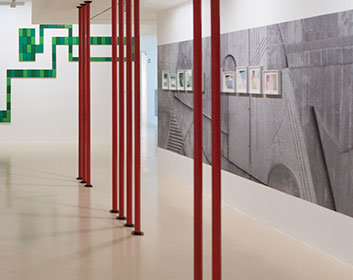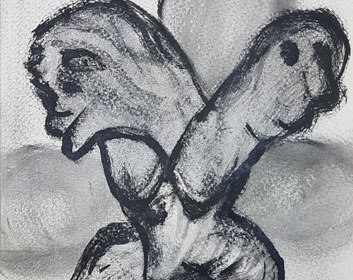2017
-
Ofri Cnaani
Today in the Museum, a work that engages with the notion of mediation in museum displays, is one of two interventions in the museum produced by Ofri Cnaani (b. 1975) for the duration of the current exhibitions. Every day, the inscription of the generic sign – habitually used to inform visitors of events in the museum – will be changed. Under the title “Today in the Museum” the artist will inscribe phrases quoted from actual exercises given to art-school students
read more >> -
Trait pour trait: Portrait of the Museum
The word portrait, common in numerous languages, comes from the Old French portret, a noun use of the past participle of portraire, which means “to paint, depict,” and is derived from the phrase trait pour trait – that is, portraiture line for line, feature for feature. In his Natural History, Pliny the Elder (AD 23–79) tells the story of a Corinthian girl, the daughter of Boutades, who, when her loved one was leaving the country, traced the outline of the shadow of his face cast on the
read more >> -
Tal Slutzker
The title of the exhibition of works by Tal Slutzker (b. 1986) – “Now” – encapsulates the premise behind the selection of the works on view. It is also a reference to the Israeli periodical of literature, art, philosophy, and criticism of that name – in Hebrew, Achshav – and to its legendary editor, Gabriel Moked. To a large extent, the magazine echoes Slutzker’s intellectual desire to engage in dialogue with artists and thinkers from a wide range of disciplines
read more >> -
Yair Barak
Yair Barak’s current project started with a visit to the studio of Uri Lifshitz, who died in 2011. Barak arrived at the studio of the artist, whom he had not known personally, in the aftermath of his death – in hindsight – saw a wall made up of joined-together small boards on which he used to hang his works in progress, and immediately understood that he had to do something about it. The large wall of photographs displayed on the concrete wall at the entrance of the museum –
read more >> -
Guy Goldstein
Using the musical compositions and published writings of German composer Richard Wagner as a starting point, Guy Goldstein (b. 1974) strategically employs the prohibited – the taboo – to illuminate the relationships between government, religion, and society. Using one of the most notorious art works as a test case, he engages with it in a way that not only makes reference to the unique nature of historical European racist crimes but also cautions against any agenda-serving manipulation or
read more >> -
Noa Gur
In her work, Ways of Making Visible, Noa Gur (b. 1980) observes the inner workings of the museum and its hidden parts, and it is precisely there – where the museum is highlighted as a producer of the sovereign gaze, generating viewers who are adept at the civic viewpoint – that she finds a possibility of subverting the power relations inherent in this institution. Gur offers a space where two interdependent projections cast doubt on our viewpoint as observers, and to a certain extent,
read more >> -
Hadas Ophrat
Hadas Ophrat (b. 1950) presents a multidisciplinary art project based on his research into the Villa Capra – also known as “La Rotonda” – outside Vicenza, Italy, designed by the Italian architect Andrea Palladio in the second half of the sixteenth century, as well as a multitude of its replicas around the world. This historical museal-architectural site is currently the residence of Count Ludovico Valmarana, and is also open to visitors twice a week. The “white
read more >> -
Yael Burstein
A staff (a stick, branch, or rod) had multiple functions in ancient times. It served, variously, as a punitive object, a symbol of authority (leader or head of the community), a token of command and respect, or a ritual object with which the religious leader or shaman presided over a religious ceremony. The exhibition presented by Yael Burstein (b. 1974) is a succinct display of four vertical elements – poles – on a white stage that is placed within the “white cube” of
read more >> -
Assaf Evron
For several years now, the artistic explorations of Assaf Evron (b. 1977) have centered on architectural ornament and decoration. In the current exhibition, he presents ornamental elements taken from the Brutalist concrete building of the Herzliya Museum of Contemporary Art (designed by the architectural office Rechter-Zarhy-Peri between 1965 and 1975), and from its immediate urban vicinity. The sculptural collection on view is unique to Herzliya and, at the same time, captures an aesthetic look
read more >> -
Osias Hofstatter
Osias Hofstatter (1905-1994, Poland), Holocaust survivor, is known as an esteemed “Holocaust artist.” He left behind a treasure trove of approximately 5,000 paintings – a legacy that he bequeathed mostly to the permanent collection of the Herzliya Museum of Contemporary Art. His current exhibition is on view at the same gallery that in the 1980s used to host a permanent display of his works from the collection.
read more >>
